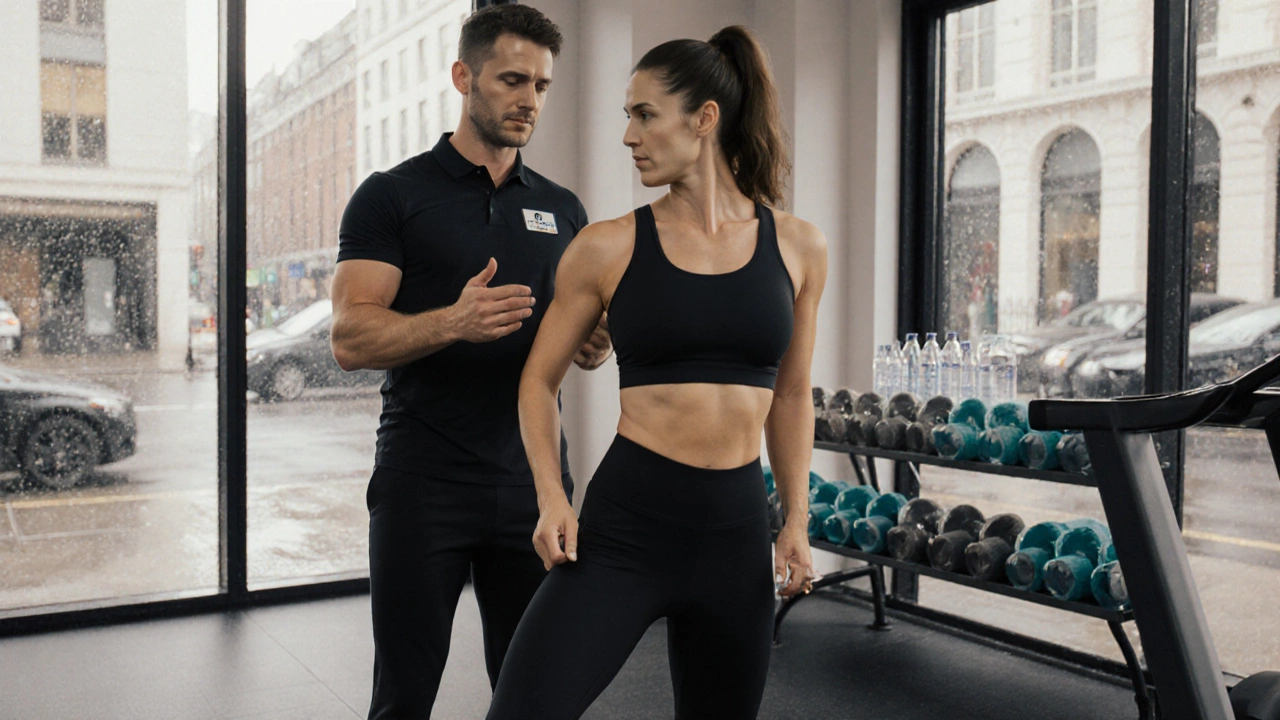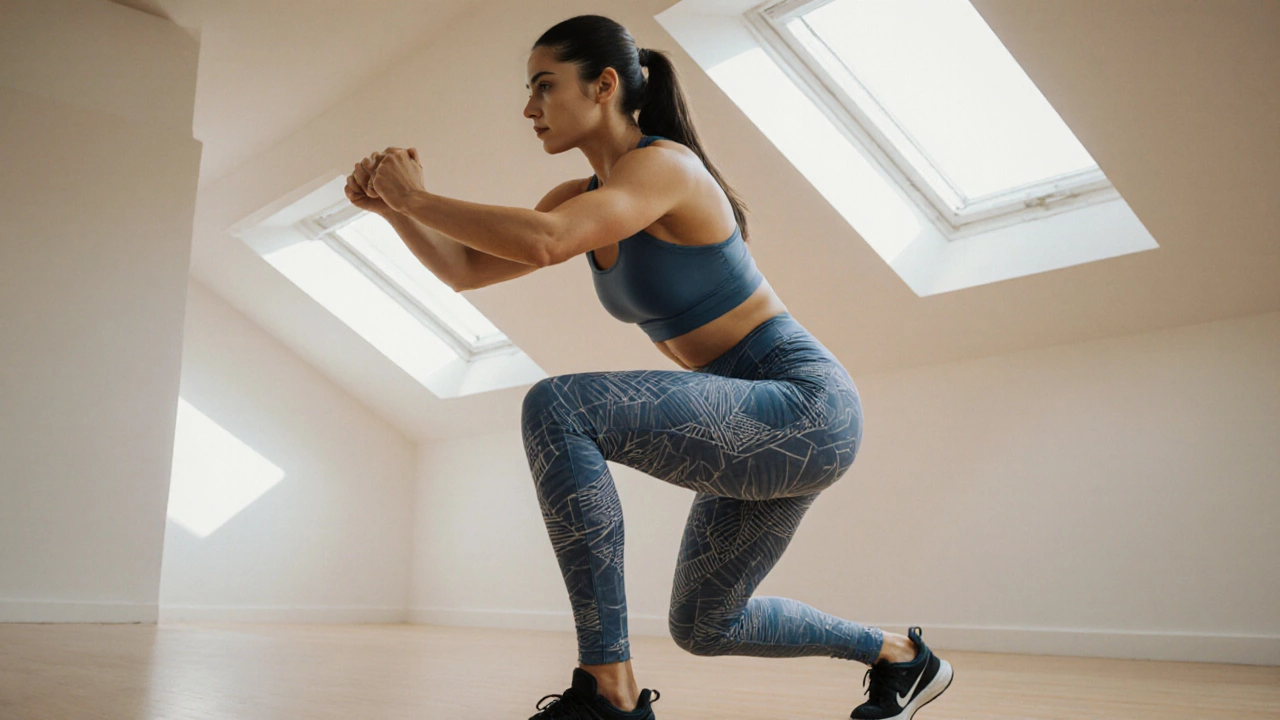
Leggings Suitability Checker
Enter details about your leggings and studio policy to check if they're suitable for personal training:
Leggings are a form of close‑fitting athletic wear made from stretch fabrics like polyester‑spandex blends. They are designed to provide flexibility, moisture‑wicking, and a streamlined silhouette, making them a popular choice for many gym‑goers. When you step into a personal training (PT) session, the big question is whether those leggings meet the studio’s expectations and help you move efficiently. Below we break down the key factors, from fabric tech to etiquette, so you can decide if leggings are a green light for your next workout.
Why Leggings Have Become Mainstream in Fitness
Over the past decade, Athletic wear has shifted from bulky shorts to sleek, form‑fitting pieces. The rise of compression leggings-which apply gentle pressure to muscles-has been driven by research from sports‑science labs showing reduced muscle vibration and faster recovery. According to a 2023 study from the New Zealand Institute of Sport, athletes who wore compression fabric reported a 12% drop in perceived soreness after a high‑intensity interval session.
Personal Training Dress‑Code Basics
Most PT studios outline a simple dress code: no open‑toed shoes, no overly revealing clothing, and fabrics that allow full range of motion. Gym etiquette also covers hygiene-clothing should be clean and able to manage sweat. Leggings tick most of these boxes, but there are nuance points to watch:
- Length and fit: Leggings should sit at the waist and cover the buttocks; ultra‑short “cut‑offs” can be deemed inappropriate.
- Transparency: Some thin fabrics become see‑through when wet. Look for a double‑layer or a high‑opacity rating (often listed as 4‑5mm thickness).
- Pocket placement: Avoid backpacks or large purses that could interfere with movement.
How Leggings Influence Workout Performance
Performance hinges on three core attributes: temperature regulation, muscle support, and freedom of movement.
- Moisture‑wicking fabric pulls sweat away from skin, keeping you dry. In a 2022 field test by Fitness NZ, participants wearing moisture‑wicking leggings reported a 15% lower core temperature during a 30‑minute circuit.
- Compression technology stabilises muscle fibers, which can improve proprioception and reduce the risk of strains during compound lifts.
- Because leggings hug the body, they eliminate excess fabric that could snag on equipment-a real safety win for exercises like kettlebell swings.
Leggings vs. Other Options: A Quick Comparison
| Bottom | Fit | Moisture‑Wicking | Compression | Typical Dress‑Code Rating |
|---|---|---|---|---|
| Leggings | Skin‑tight | High (poly‑spandex blend) | Variable (often low‑to‑moderate) | ✓✓✓✓ |
| Compression Tights | Skin‑tight | Very High (engineered fibers) | High (medical‑grade) | ✓✓✓✓ |
| Yoga Pants | Relaxed‑fit | Medium | Low | ✓✓✓✗ |
| Gym Shorts | Loose‑fit | Medium | None | ✓✓✗✗ |
| Track Pants | Relaxed‑fit | Low | None | ✓✗✗✗ |
For most PT environments, the top‑rated legs are leggings and compression tights because they balance modesty, performance, and safety.

Choosing the Right Pair for Your PT Sessions
Look for these attributes when shopping:
- Fabric blend: 80% polyester & 20% spandex offers durability and stretch.
- Opacity rating: 4‑5mm thickness ensures no transparency when you sweat.
- Waistband design: Wide, flat bands stay put during squats and deadlifts.
- Seam placement: Flat‑lock seams prevent chafing in high‑friction zones.
Brands like Lululemon, Nike, and local NZ label Kiwifit have lines specifically marketed for PT, often labeled “training leggings”.
Studio Policies & How to Navigate Them
Every gym or personal training studio may have a written Studio policy on attire. If you’re unsure:
- Check the website’s FAQ or the welcome packet.
- Ask your trainer before the first session - a quick “What’s the dress code?” shows respect.
- Keep a backup pair of neutral‑colored leggings (black, navy, or charcoal) for studios with stricter modesty rules.
Most trainers care more about your ability to move safely than the exact hue of your leggings, but adhering to guidelines avoids awkward moments.
Real‑World Scenarios
Scenario 1 - High‑Intensity Interval Training (HIIT): Jane wore lightweight, low‑opacity leggings with a breathable mesh panel. The moisture‑wicking kept her dry, and the tight fit prevented her shirt from riding up during burpees. Her trainer praised the choice, noting that the leggings didn’t hinder any jump‑or‑land moves.
Scenario 2 - Strength Training with Heavy Loads: Mark preferred thick compression tights for deadlift sessions. The added pressure gave him a sense of stability, and the fabric’s durability withstood the friction of the barbell. However, his studio required that compression wear be paired with a loose‑fit top to avoid a “tight‑fit only” look, which they deemed unprofessional.
Scenario 3 - Yoga‑Focused PT: A trainer who integrates yoga asked clients to wear leggings that are at least 90% cotton‑blend for extra softness during floor poses. The softer material helped clients stay comfortable during longer holds.
Bottom Line: Are Leggings OK for PT?
Yes-provided they meet basic criteria: non‑transparent, appropriate length, and made from moisture‑wicking, stretch‑ready fabric. Pair them with a well‑fitted athletic top, respect any studio‑specific rules, and you’ll enjoy both style and performance benefits.
Frequently Asked Questions
Can I wear leggings with holes or rips to a personal training session?
Most studios consider heavily distressed leggings unprofessional because they can look overly casual. If the rips are minimal and the fabric remains opaque, you might be fine, but it’s safest to choose a cleaner pair for your first session.
Do compression leggings replace the need for a sports bra?
No. Compression leggings support the lower body, while a sports bra provides crucial support for the bust during high‑impact moves. Use both for optimal comfort.
Is there a difference between leggings for running and leggings for PT?
Running leggings often prioritize lightweight, breathable panels to cool the legs, whereas PT leggings may have added reinforced stitching for durability during weight‑lifting and lateral movements. Choose based on the primary activity of your session.
Can I wear leggings that are longer than ankle length?
Full‑length leggings that hit the ankle are perfectly acceptable and often preferred for colder gyms. Just ensure they don’t bunch up inside shoes, which could cause slipping.
What fabrics should I avoid for PT leggings?
Avoid 100% cotton leggings-they absorb sweat and become heavy, increasing the risk of chafing. Also steer clear of ultra‑thin silk‑like fabrics that become see‑through when wet.
Do I need to wash leggings after every session?
Yes, especially if they contain synthetic fibers that retain odor. A quick 30‑minute wash on a cold cycle preserves elasticity and keeps the fabric fresh.
Are leggings allowed in group PT classes?
Generally, yes-provided the class’s specific dress code doesn’t require shorts or skirts. Always double‑check the instructor’s guidelines before the first class.
How do I spot high‑quality leggings?
Look for a tight weave, a stated opacity rating (4‑5mm), reinforced waistbands, and flat‑lock seams. Brands that list a specific polyester‑spandex ratio (e.g., 80/20) usually meet performance standards.
